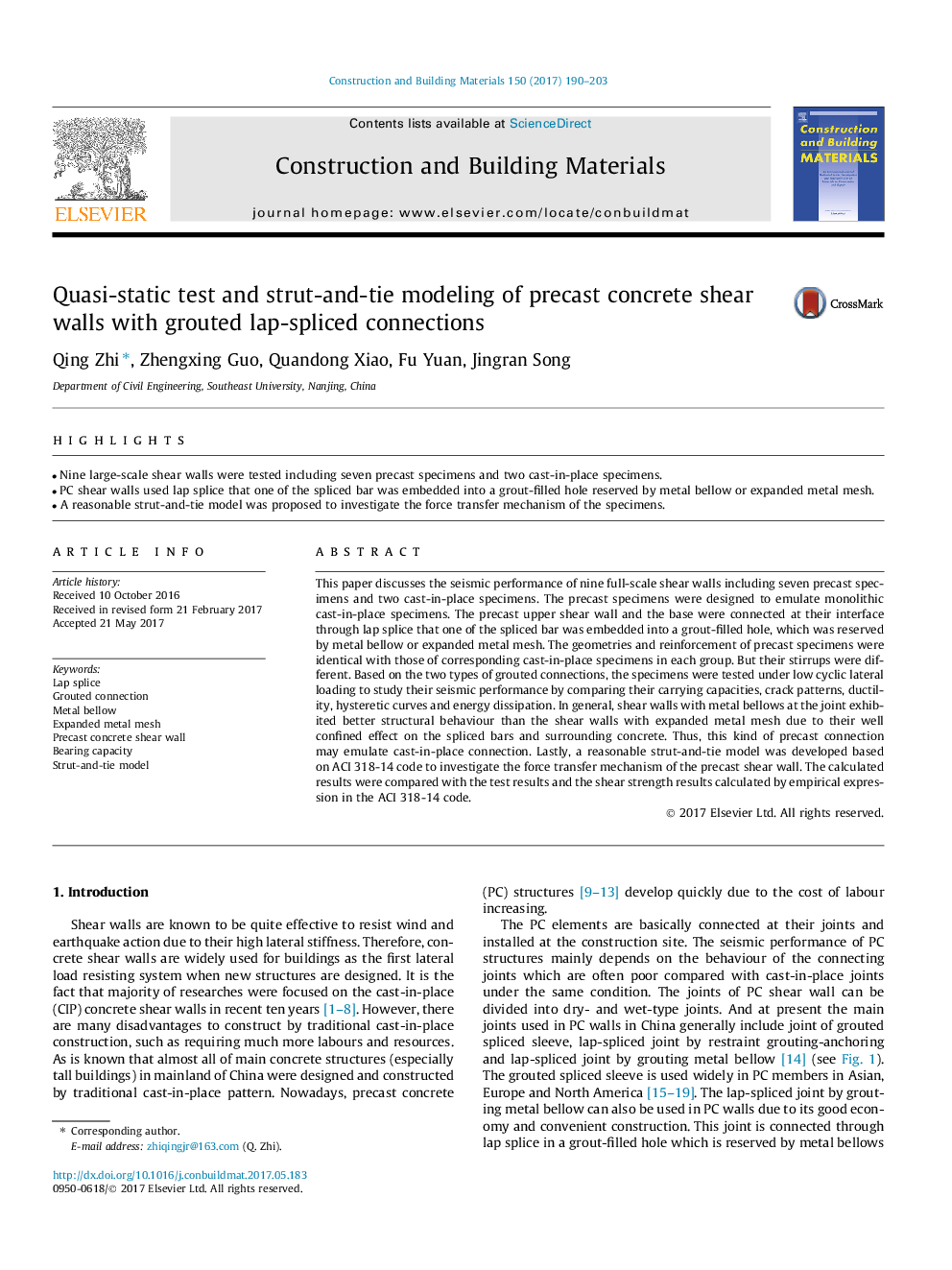| Article ID | Journal | Published Year | Pages | File Type |
|---|---|---|---|---|
| 4918275 | Construction and Building Materials | 2017 | 14 Pages |
Abstract
This paper discusses the seismic performance of nine full-scale shear walls including seven precast specimens and two cast-in-place specimens. The precast specimens were designed to emulate monolithic cast-in-place specimens. The precast upper shear wall and the base were connected at their interface through lap splice that one of the spliced bar was embedded into a grout-filled hole, which was reserved by metal bellow or expanded metal mesh. The geometries and reinforcement of precast specimens were identical with those of corresponding cast-in-place specimens in each group. But their stirrups were different. Based on the two types of grouted connections, the specimens were tested under low cyclic lateral loading to study their seismic performance by comparing their carrying capacities, crack patterns, ductility, hysteretic curves and energy dissipation. In general, shear walls with metal bellows at the joint exhibited better structural behaviour than the shear walls with expanded metal mesh due to their well confined effect on the spliced bars and surrounding concrete. Thus, this kind of precast connection may emulate cast-in-place connection. Lastly, a reasonable strut-and-tie model was developed based on ACI 318-14 code to investigate the force transfer mechanism of the precast shear wall. The calculated results were compared with the test results and the shear strength results calculated by empirical expression in the ACI 318-14 code.
Related Topics
Physical Sciences and Engineering
Engineering
Civil and Structural Engineering
Authors
Qing Zhi, Zhengxing Guo, Quandong Xiao, Fu Yuan, Jingran Song,
